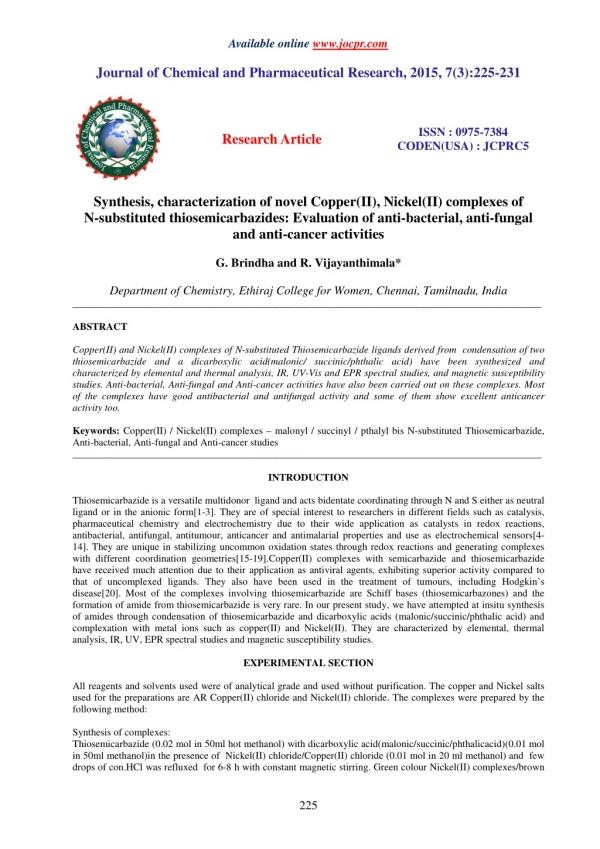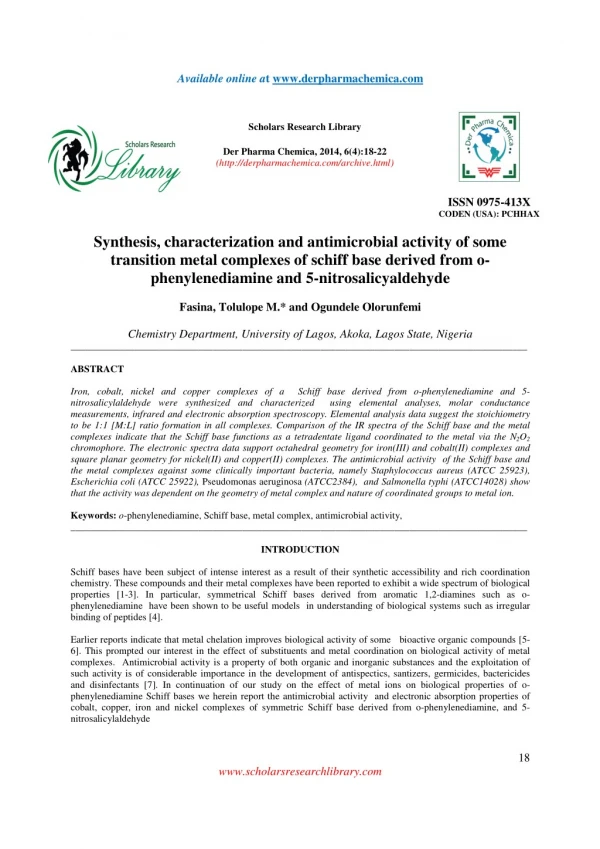Synthesis, characterization and antimicrobial activity of some transition metal complexes of schiff base derived from op
Iron, cobalt, nickel and copper complexes of a Schiff base derived from o-phenylenediamine and 5- nitrosalicylaldehyde were synthesized and characterized using elemental analyses, molar conductance measurements, infrared and electronic absorption spectroscopy. Elemental analysis data suggest the stoichiometry to be 1:1 [M:L] ratio formation in all complexes. Comparison of the IR spectra of the Schiff base and the metal complexes indicate that the Schiff base functions as a tetradentate ligand coordinated to the metal via the N2O2 chromophore. The electronic spectra data support octahedral geometry for iron(III) and cobalt(II) complexes and square planar geometry for nickel(II) and copper(II) complexes. The antimicrobial activity of the Schiff base and the metal complexes against some clinically important bacteria, namely Staphylococcus aureus (ATCC 25923), Escherichia coli (ATCC 25922), Pseudomonas aeruginosa (ATCC2384), and Salmonella typhi (ATCC14028) show that the activity was dependent on the geometry of metal complex and nature of coordinated groups to metal ion.
★
★
★
★
★
70 views • 5 slides


